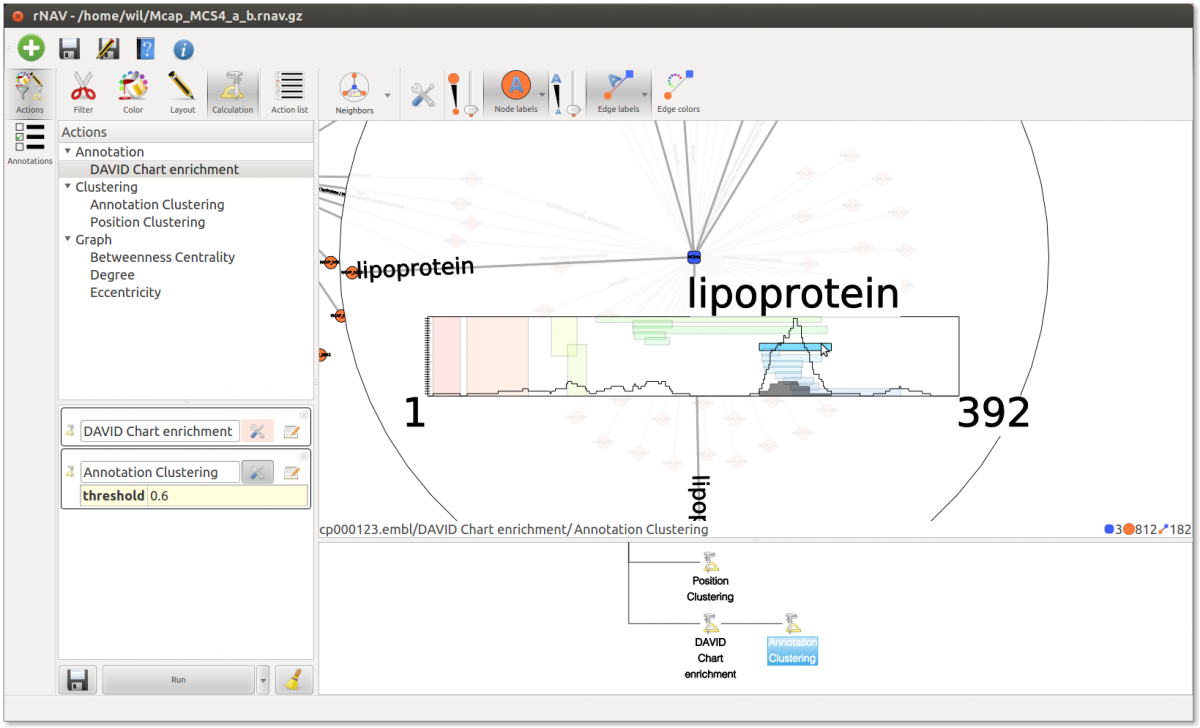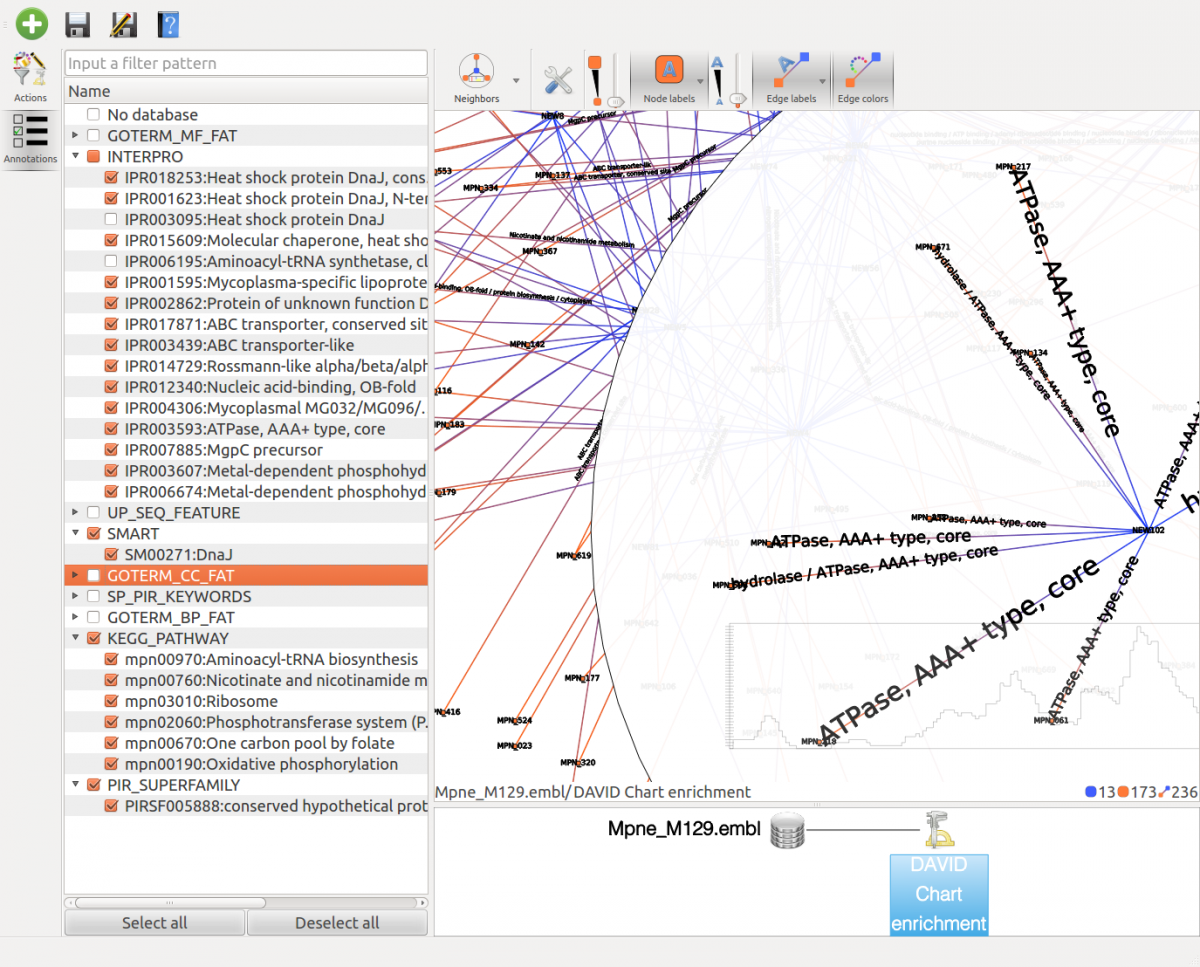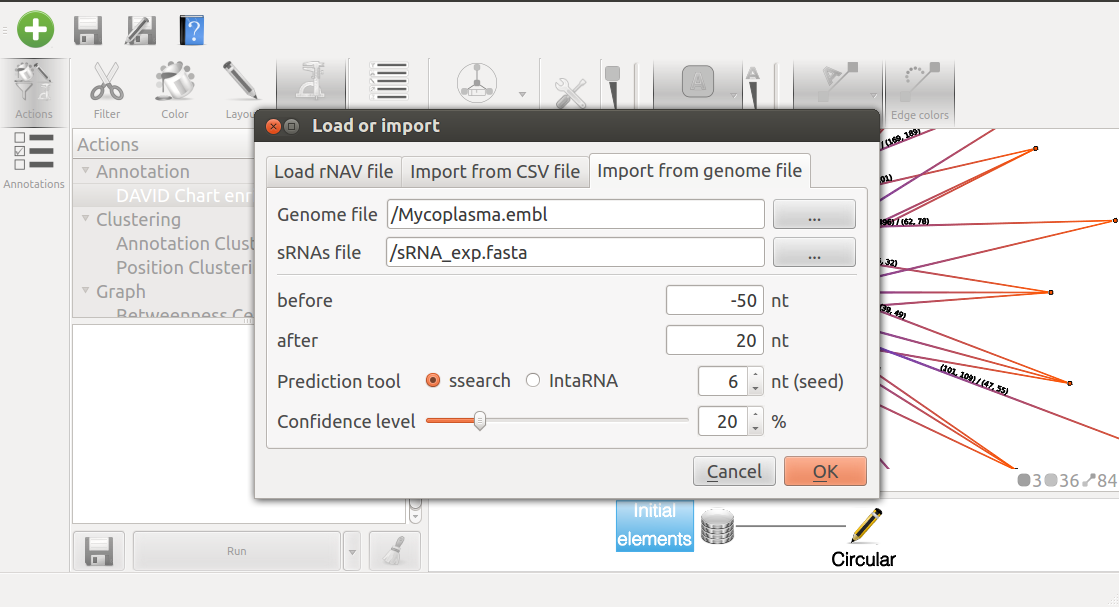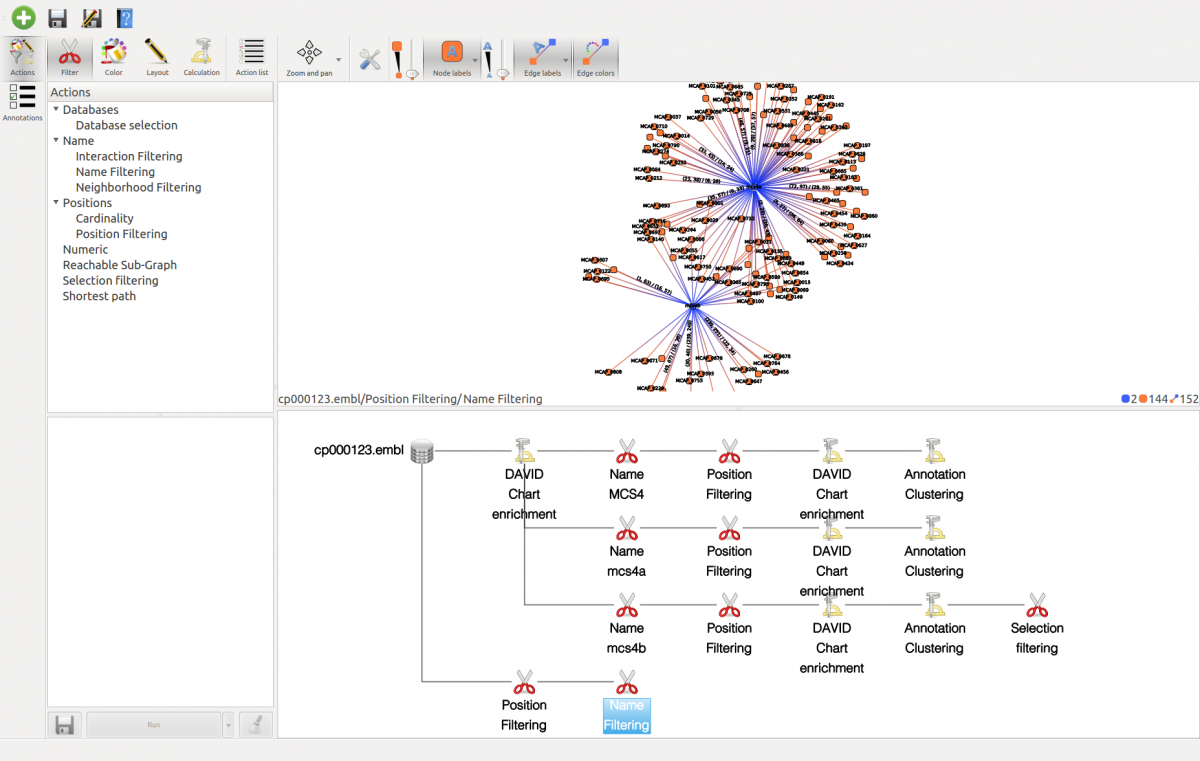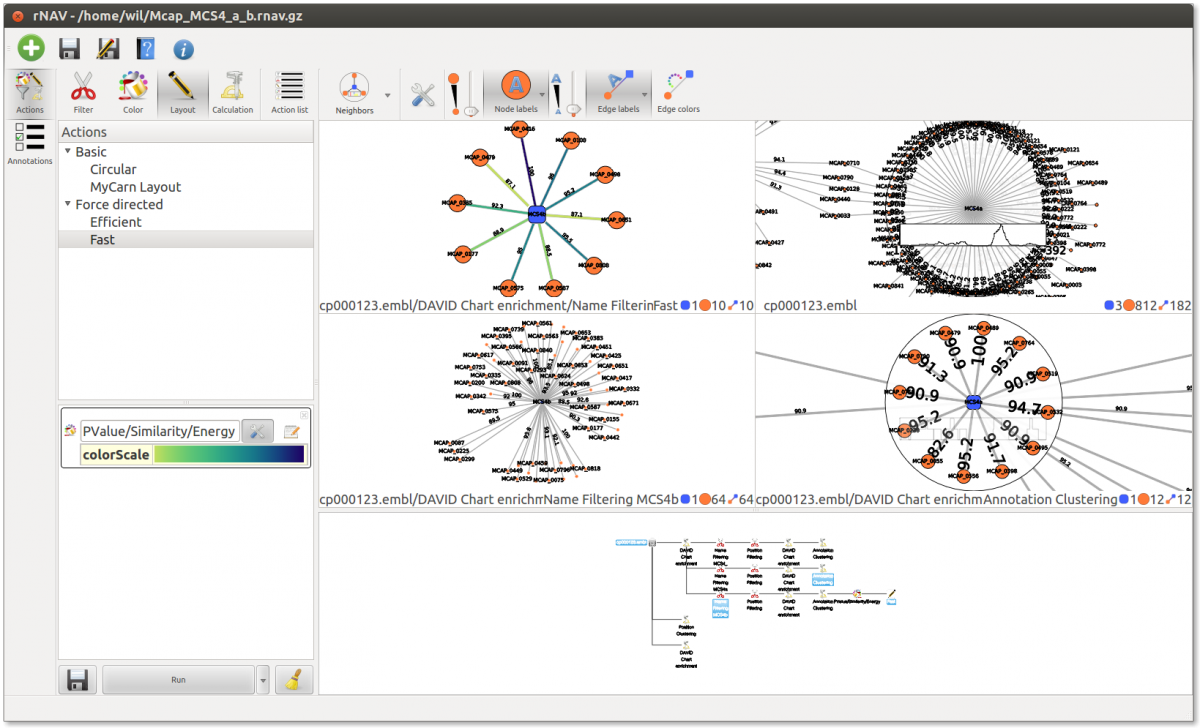Presentation | Screen captures | Download | Publications| Contact
Presentation
rNAV 2.0 (for rna NAVigator), is a major evolution of rNAV, a tool for the visual exploration and analysis of bacterial sRNA-mediated regulatory networks. rNAV has been designed to help bioinformaticians and biologists to identify, from lists of thousands of predictions, pertinent and reasonable sRNA target candidates for carrying out experimental validations.
We now propose an automatic mRNAs extraction from a simple genbank or embl genome file. Moreover, rNAV now features an automatic annotation enrichement plugin powered by DAVID statistical enrichement tool.
rNAV algorithms can be gathered into pipelines which can then be saved and reused over several sessions. To support exploration awareness, rNAV also provides an exploration tree view that allows to navigate through the steps of the analysis but also to select the sub-networks to visualize and compare. These comparisons are facilitated by the integration of multiple and fully linked views.
This framework had been used to analyse various real biological data including several mycoplasma strains.
Some key features :
- Automatic functional annotation with DAVID[1] webservice (Database for Annotation, Visualization and Integrated Discovery)
- Annotation clustering : cluster redudant annotations
- Simultaneous visual analysis of annotations AND positions of several targets with enhanced neighbors tool.
- Visual analysis of sRNA regulatory networks at genome scale
- Automatic mRNA extraction from genome files (genbank or embl) with user defined region
- Integration of two interactions prediction tools : ssearch and IntaRNA[2]
- Position clustering : cluster targets from their interaction positions
- Multiple and fully linked view
- Exploration tree view
- Labels can display many input information like P-value, Similarity or interaction energy
[1] D. W. Huang, B. T. Sherman, and R. A. Lempicki. Systematic and integrative analysis of large gene lists using david bioinformatics resources. Nat Protoc, 4(1):44–57, 2009.
[2] Anke Busch, Andreas S. Richter, and Rolf Backofen IntaRNA: efficient prediction of bacterial sRNA targets incorporating target site accessibility and seed regions - Bioinformatics, 24 no. 24 pp. 2849-56, 2008
Screen captures
Download
rNAV is built on top of Tulip 3.8. and they are both released under the LGPL licence. Actually only available for linux (tested on Ubuntu 12.04 LTS), rNAV2.0 is distributed as a unique tarball including tulip. You have to compile rNAV2.0 yourself. If you want to use IntaRNA interaction prediction tool, you will need to download it (along with his own dependencies) but you don't have to compile and install it yourself : rNAV CMakelists can handle that for you (see compilations instructions).
Download the rNAV2.0 source package and refer to the Compilation instructions to see how to compile it
Source code packages |
Documentation |
|
|
rNAV2.0 sources (See the compilation instructions) |
If you have problem with rNAV2.0, don't hesitate to mail the project maintainer or use the Tulip forum.
Related publications
[2015] Patricia Thébault, Romain Bourqui, William Benchimol, Christine Gaspin, Pascal Sirand-Pugnet, Raluca Uricaru, Isabelle Dutour. Advantages of mixing bioinformatics and visualization approaches for analyzing sRNA-mediated regulatory bacterial networks. Briefings in Bioinformatics journal, 2015 Sep;16(5), pp. 795-805. [2013] Jonathan Dubois, Amine Ghozlane, Patricia Thébault, Isabelle Dutour, Romain Bourqui. Genome-wide detection of sRNA targets with rNAV. Symposium on Biological Data Visualization, 2013.Contact
Romain Bourqui (project maintainer)
Email: bourqui@labri.fr
Former developers
William Benchimol
Jonathan Dubois
Presentation | Screen captures | Download | Publications| Contact





